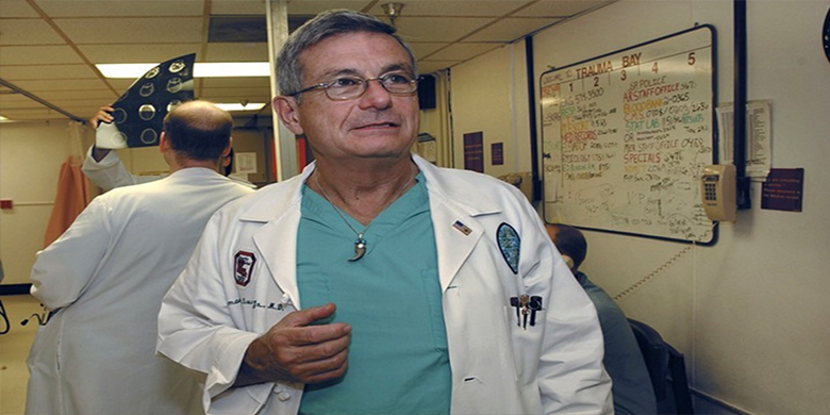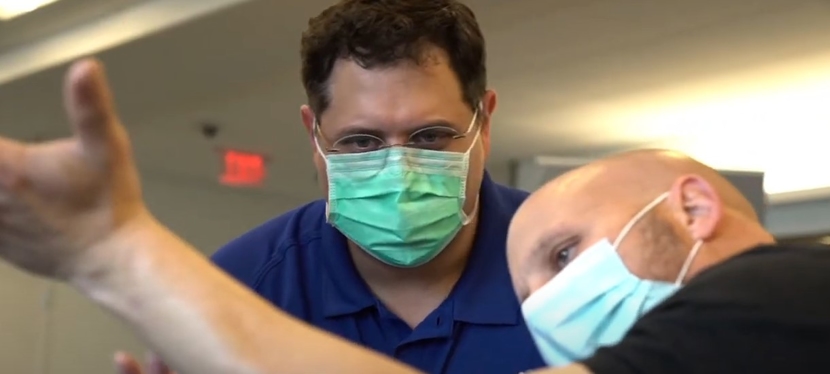Take a deep breath: 5 easy ways to improve your lung health
- Category: Cancer Care
- Posted On:

We rarely think about our lung health when our lungs are functioning normally. As long as we can breathe in and out without a problem, the organs making that happen aren’t top of mind.
But it’s always a good idea to know how your body works and what you can do to protect it. November is Lung Cancer Awareness Month. You may have seen the distinctive pearl white ribbon designed to promote lung cancer awareness.
Lung cancer is common among Americans. In fact, the American Cancer Society estimates that more than 236,000 Americans will be diagnosed with lung cancer in 2022 alone.
Beyond lung cancer, many other conditions and hazards can impact lung health. What can you do to protect your lungs? Read on to get the details.
1. Don’t smoke.
When it comes to keeping your lungs healthy, smoking is the biggest no-no. If you don’t smoke, don’t start! And if you do smoke, talk with your primary care provider about a plan for quitting.
Lung cancer is a risk even for people who don’t smoke, particularly if they are exposed to smoke. Take steps to avoid exposure to secondhand and even third-hand smoke to protect your lungs and keep them functioning at their best.
2. Steer clear of air dangers indoors.
While secondhand exposure to cigarette smoke is one factor that makes the air indoors less healthy, it’s not the only one. Many other air hazards are found inside the home and in other buildings.
You’ll want to keep an eye on two major dangers—carbon monoxide and radon. Both can permeate a building without raising a red flag but have dangerous and even deadly consequences.
Carbon monoxide is a colorless, odorless gas produced when fuel is burned, such as in vehicles, stoves, grills and fireplaces. To protect yourself, install carbon monoxide detectors in your home and test them regularly when you check your smoke alarms.
Radon exposure is the second leading cause of lung cancer. This gas, which is also colorless and odorless, builds up naturally in the environment and can enter a home through cracks in the foundation or walls. You can test your home for radon with a simple, low-cost test kit.
Also, pay close attention to the chemicals used in your home, especially for cleaning. Many of them can be toxic if inhaled in a closed space. If you or a loved one have asthma, you may also want to avoid gas appliances, including gas stoves, which can trigger asthma symptoms such as shortness of breath.
3. Stay inside when outdoor pollutants are high.
With the potential for indoor pollutants, a bit of fresh air might sound like the perfect remedy. But there are also pollutants outdoors.
Air quality varies from day to day. If you have a lung disease, such as asthma or chronic obstructive pulmonary disease (COPD), you may want to pay close attention to the day’s predicted air quality level and avoid the outdoors on high-pollution days. This info can often be found on websites and apps devoted to the weather.
4. Give your immune system a boost.
Your body functions best when it’s well. This is also true for your lungs! To keep your lungs at their best, do your best to avoid infections that impact the respiratory system.
That can especially be a challenge in the middle of cold and flu season. The common cold, the flu and COVID-19 can all negatively impact the lungs. Take steps to prevent them and protect yourself by washing your hands regularly, avoiding crowds when possible during the colder months and minimizing contact with those who are sick.
Getting a flu shot annually and staying up to date with the COVID-19 vaccine can also protect your lung health.
5. Breathe your way to stronger lungs.
Yes, it’s that simple! Deep breathing can do a world of good for your lungs. Practicing breathing techniques, such as diaphragmatic breathing, strengthens your lungs and increases your lung capacity.
When you do this regularly, it keeps your lungs functioning at their best. Not sure what to do?
Your smartwatch or fitness tracker may have a breathing exercise you can access at the click of a button. Still, you can also breathe in a way that keeps the focus on your diaphragm muscle. It may help you to think of it as “belly breathing” since you’re concentrating on the section between your belly and your lungs.
Need help breathing deep or experiencing some type of lung disease? The LCMC Health respiratory krewe is here for you.

